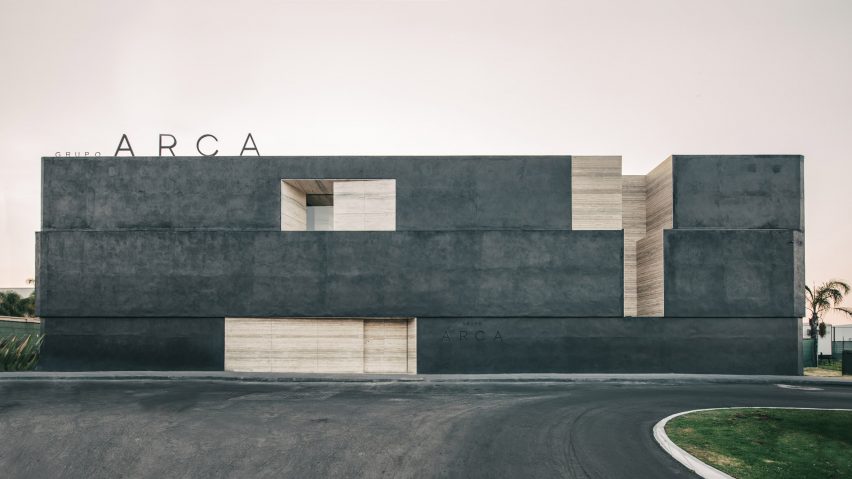
Esrawe Studio carves quarry-like landscape for Guadalajara stone showroom
Monolithic blocks of stone mimic man-made quarry landscapes for Grupo Arca's showroom and cultural centre in Guadalajara, Mexico, designed by Esrawe Studio.
The complex is designed to promote culture and education over business transactions, with a focus on Mexican architecture, design and fine arts.
Esrawe Studio split these two functions into separate buildings. Arts and learning spaces are found in the main, street-facing building in front of a large warehouse storing stone dealer Grupo Arca's collections.
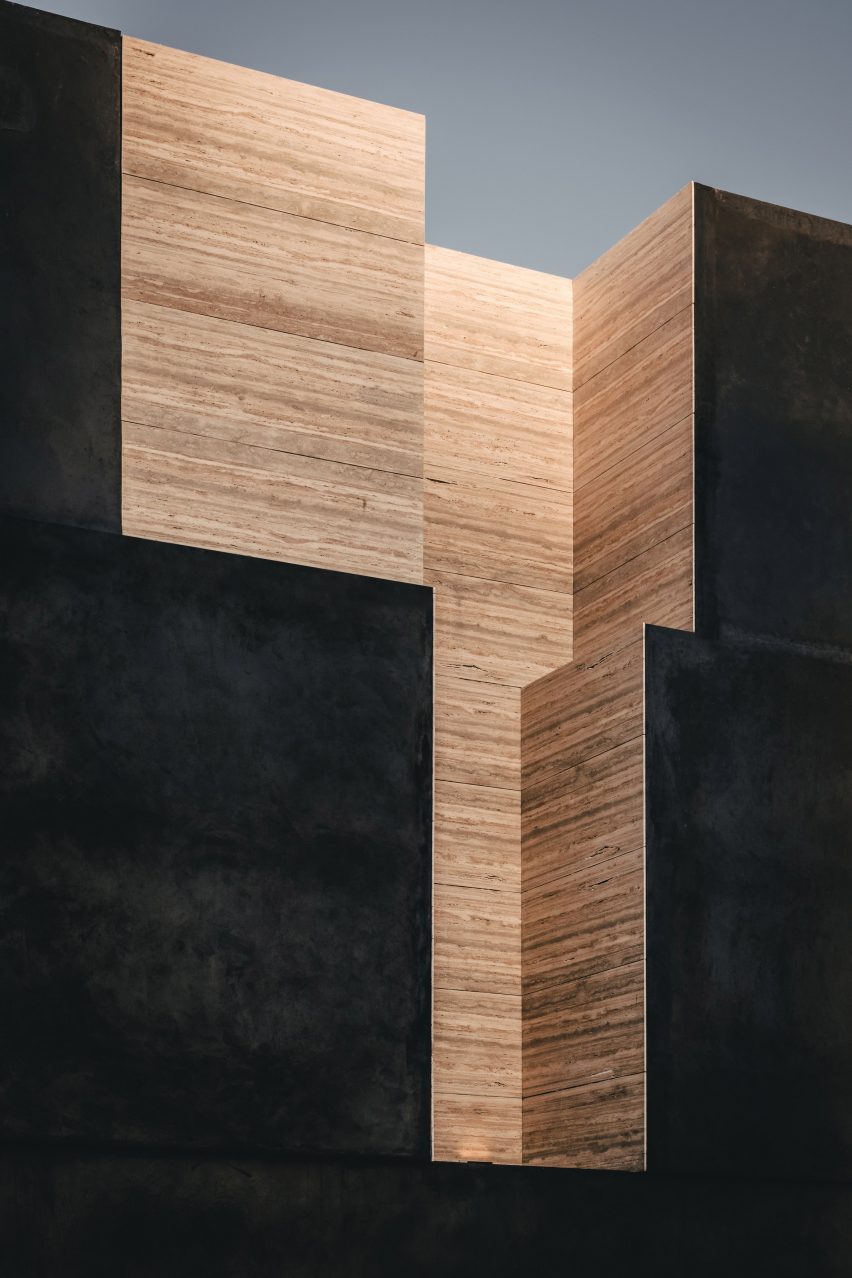
Rectangular cut-outs on the building's facade reveal a layer of ocean blue marble underneath the black concrete exterior cladding.
Visitors access the building through a small opening in the monolithic facade and are led down a narrow corridor to the central internal courtyard.
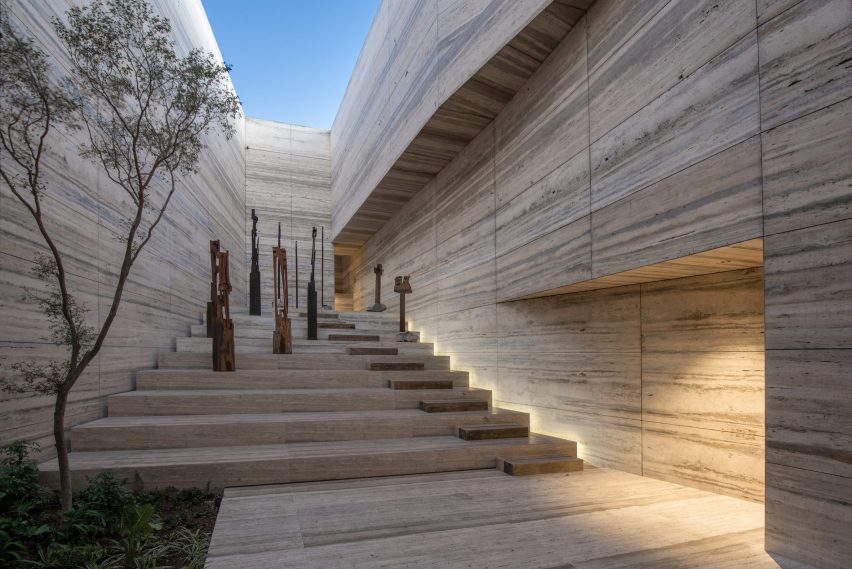
Called the Forum, its walls are lined with the same travertine from the facade, designed to create the sensation of being inside an excavated space.
"The character of the quarry is defined by the material," said the studio. "The monolithic expression and the monumental scale of it makes it a one of a kind experience."
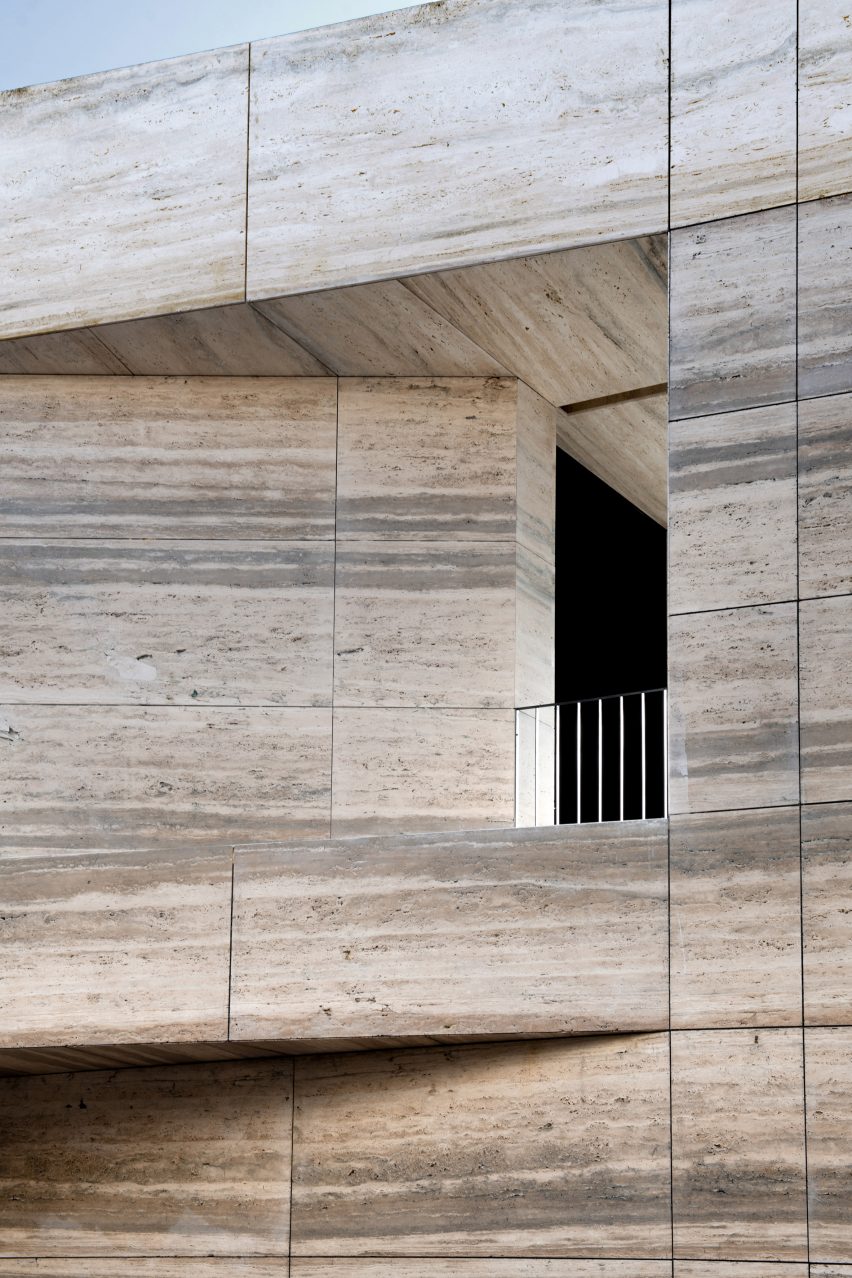
Irregularly angled walls of the enclosing three floors above help carve out the stepped exhibition space within.
The sculptural walls allude the "manufactured landscape" of quarries, a term coined by Edward Burtynsky to describe the manipulation of organic landforms in the search for raw materials.
The upper levels protrude from and chisel into the Iranian travertine walls, with slim openings to look down into the space on the east and western sides.
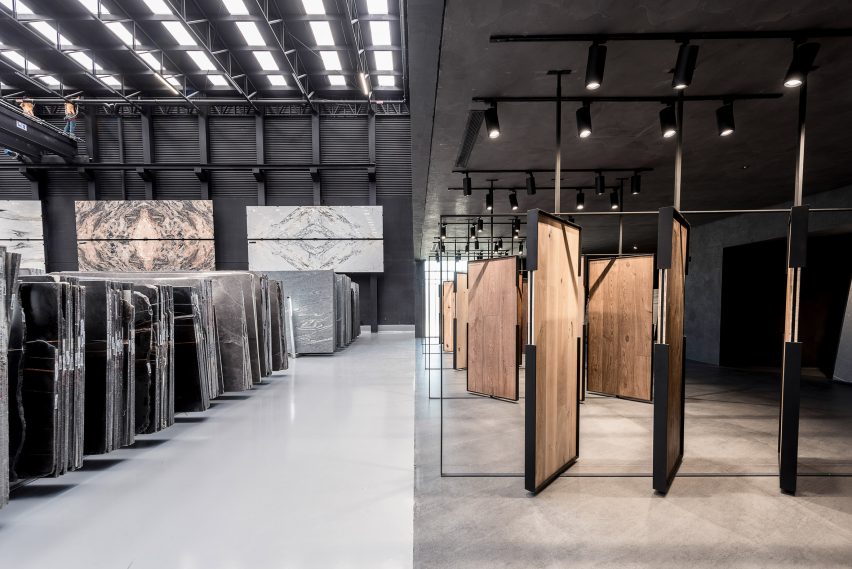
On the ground and first floor, timber samples are slotted into a black frame and exhibited offset to each other, like a gallery installation.
Places for individual study are available on the second floor, adjacent to the Design Centre, where architects can meet with clients.
Visitors have free access to magazines and books by Grupo Arca on famous architects in a library located on the third floor.
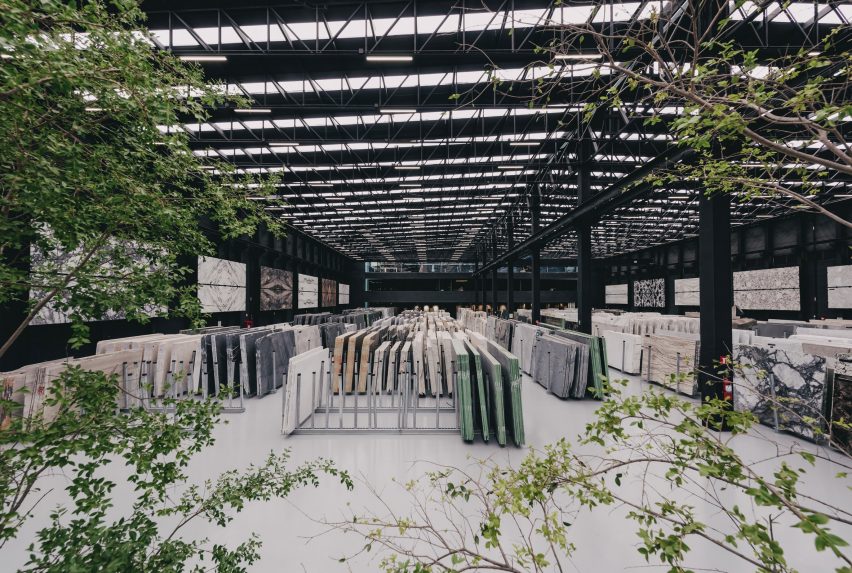
A double-height space at the rear is planted with trees, separating the two buildings.
Unlike the stone used in the main building, the warehouse is designed as a neutral space to shift the focus onto the material collections available to buy inside.
Strips of lighting placed in between the trusses illuminate the stone samples below, against the black-painted walls.
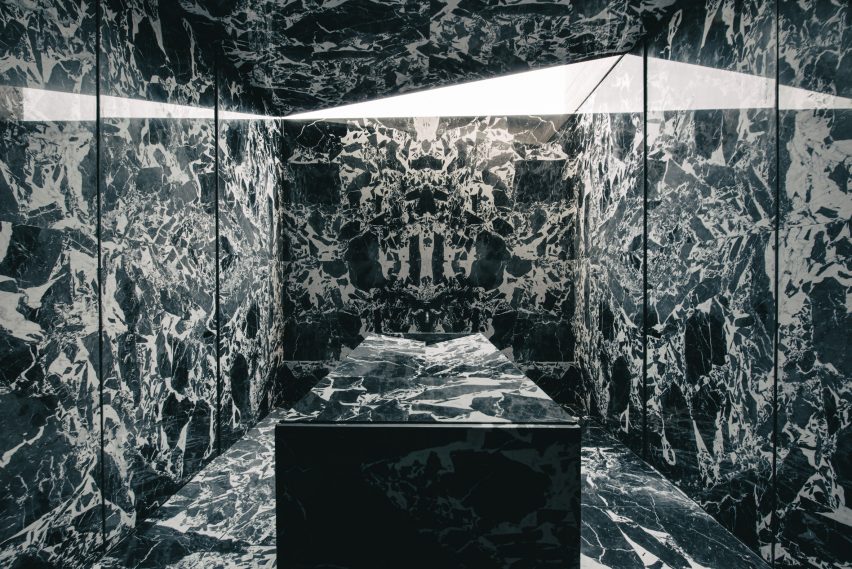
Potential buyers are invited to browse the samples and use their mobile phones to scan QR codes for each product.
When scanned, the technology brings up additional information and costs and starts to build a profile of interests and future buying trends.
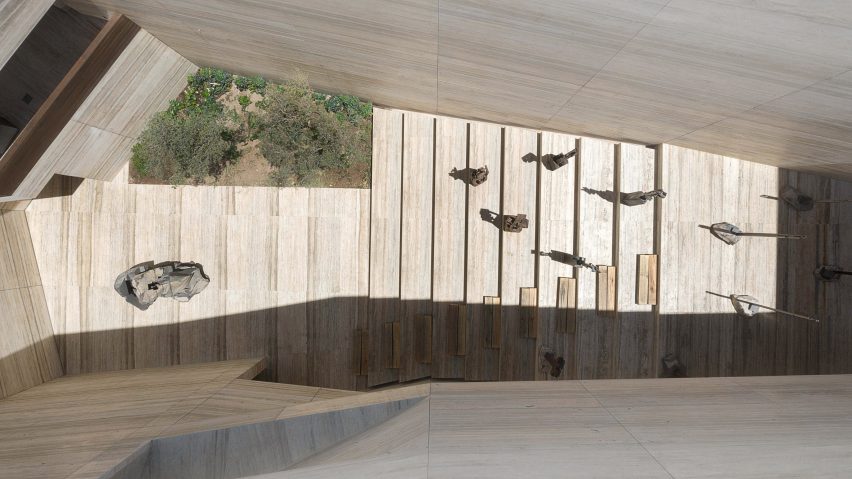
Mexican sculptor Jorge Yazpik was invited to exhibit his artwork in the Forum for the showroom's opening night.
The space will be lent to various cultural events over the year including exhibitions, lectures and film screenings to build a connection with the arts scene in Guadalajara.
Elsewhere in the country, Esrawe Studio works with the aim of elevating Mexico's status in the design world.
Dark, shiny tiles decorate the ceiling of the bar located inside the National Auditorium, whilst selected furniture and lighting projects were featured at Masa Gallery alongside other famed Mexican designers earlier this year.
Photography is by Genevieve Lutkin unless stated otherwise.
Project credits:
Creative director: Héctor Esrawe
Architectural concept: Esrawe Studio
Architecture, interior design and furniture: Esrawe Studio
Design team: Laura Vela, Antonio Chávez, María Santibañez, Jacobo Mendoza, Andrea Guillén, Brenda Vázquez, Fernando Carnalla, Tatiana Godoy, Fabián Dávila, Daniela Pulido, Javier García Rivera
Concept of experience in showroom: Esrawe + Cadena
Brand identity: Cadena+Asociados Concept Design
Renders: Yair Ugarte, Moisés González, Gael Félix
Technical collaboration: A-001
External advisors: CuldeSac, Alberto Martínez
Ilumination: Luz en Arquitectura
Landscape: PAAR Paisaje Arquitectura
Construction: CDM, Jaime de Obeso, Olmo Ernesto Godínez